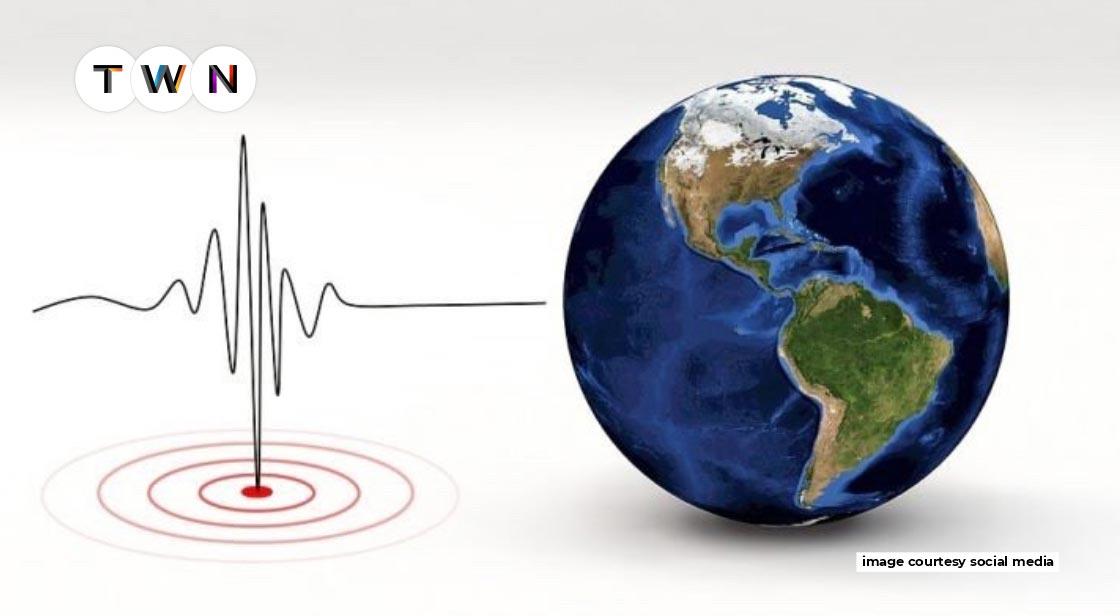
You can feel something pulsing in your chest as a human. That is the pulsing of your heart. What if I told you that our mother earth has a heartbeat as well, and that it beats every 26 seconds? You may not believe me now, but after you finish reading this post, you will. The reasons behind the planet's pulsation are unknown. Does this pique your interest? If that's the case, keep reading as we try to solve this mystery.
Every 26 seconds, the Earth tremors. It's not much — certainly not enough to feel — but it's enough to cause a quantifiable "blip" on scientists' and researchers' detectors on numerous continents. Despite the fact that this pulse has been observed for decades, scientists are at odds as to what is producing it.
The Earth's Pulsating Every 26 Seconds Origin
A research scientist named Jack Oliver, who was working at the Lamont-Doherty Geological Observatory at the time, reported the pulse, or "microseism" in geologist jargon, in the early 1960s. His later work, which gave some tentative evidence for moving tectonic plates, is what he is best known for. The pulse was formed somewhere "in the southern or equatorial Atlantic Ocean," according to Oliver, and it was highest in the Northern Hemisphere during the summer months (or winter in the Southern Hemisphere).
According to Mike Ritzwoller, a seismologist at the University of Colorado, Boulder, whose team detected the unusual pulse decades later, Jack did not have the resources available in the 1960s that he does now. Because there were no digital seismometers at the time, Jack had to rely on paper records.
In 1980, Gary Holcomb, a geoscientist with the US Geological Survey, looked into the odd microseism and determined that it was strongest during storms. However, his and Oliver's efforts would be largely overlooked, while the constant seismic drumming beneath our feet would go unreported.
Greg Bensen, a PhD student at the University of Colorado, Boulder, began working with seismic data at his lab in 2005. When his advisor walked in, he requested him to tell him about his project. Bensen looked up some data, according to Ritzwoller, and there it was: From a long distance, a powerful signal. Nikolai Shapiro, a postdoctoral research scientist, and I both saw something odd as soon as we saw it, but we couldn't figure out what it was. The team was perplexed, so they looked into the abnormalities from every angle they could. Was there an issue with their equipment? Or maybe their research? Is it possible that there was actual seismic activity? Everything seemed to point to the latter. They were even able to locate the source of the pulse: a specific location in the Gulf of Guinea, which runs along Africa's western coast. In 2006, they resurrected Oliver and Holcomb's work and published a paper in Geophysical Research Letters. Since then, no one has been able to confirm the cause of the regular earthquakes. Many individuals believe waves are to blame, while others believe volcanic activity is to blame.
Every time the Earth moves, it pulsates.
Though this particular pulse is intriguing, the fact that seismicity happens during a tranquil time (i.e., when there are no earthquakes or volcanic eruptions) is old news. A gentle seismic sound is always there in the background. According to Ritzwoller, seismic noise is mostly caused by the sun. The sun heats the entire world more near the equator than at the poles, creating winds, storms, ocean currents, and waves, according to him. A wave's energy is transmitted to the soil when it hits a cliff. According to Ritzwoller, it sounds like you're tapping on your desk. It damages the area near your knuckle, but the deformation is subsequently spread throughout the table. If someone on the other side of the table places their hand, or possibly their cheek, on the table, they can feel the vibration.
The 26-Second Pulse's Location
Garrett Euler, a graduate student at Washington University in St. Louis, came six years later in the lab of seismologist Doug Wiens. The source of the pulse was restricted even more by Euler to the Bight of Bonny in the Gulf of Guinea. He also claimed that the cause was most likely caused by vibrations striking the coast. When a wave propagates throughout the ocean, the difference in pressure in the water may not have much of an effect on the ocean floor, according to Wiens. When it slams into the continental shelf, the impact fractures the ocean floor (much like pounding on a desk does) and causes seismic bursts that reflect the wave movement. Euler presented his findings at the Seismological Society of America's annual meeting in 2013.
However, not everyone was sold on the idea. In the same year, a team led by Yingjie Xia of Wuhan, China's Research Center of Geodesy and Geophysics proposed that the 26-second pulse was most likely generated by volcanoes rather than earthquakes. The pulse's source is unusually near to a volcano on the So Tomé archipelago in the Bight of Bonny. Undoubtedly, a volcano creates a microseism comparable to this one in at least one other spot on Earth. It is located in Japan. Even outside of the primary argument, other questions persist. Why are we here, specifically? What makes the Bight of Bonny so special? There are dozens of other continental edges and volcanoes across the world that aren't creating seismic pulses.
No one has figured out the pulse sixty years after it was first discovered. It's possible that's because seismologists don't think it's a high priority. "In seismology, there are specific elements that we focus on," Wiens explains. "We're trying to figure out what's going on beneath the landmasses and things like that." This is a little outside the realm of our regular investigation.
Tags:
earth keeps pulsating, earth pulsating 26 seconds, earth keeps pulsating every 26 seconds
Read This Full ARTICLE, Click Here
Explore Global Business News, Click Here


Comments
Post a Comment